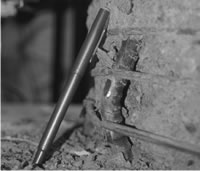
Figure 1. Buckled Bar in Pseudo-Static Column
F=faculty; GS=graduate student; US=undergraduate student; PD=post-doc; I=industrial collaborator; O=other
Click on images to enlarge in a new window
The overall objective of the research is to advance the understanding of bar buckling in circular reinforced concrete columns and the parameters that control it. Specific goals are:
The research will provide reliable bar buckling data for PEER and other researchers, better understanding of the phenomenon and improved damage models for bar buckling. More specifically, the project may provide:
Damage to bridge columns with full and moderate ductility capacities includes concrete spalling, crushing of the core concrete, spiral fracture, and bar buckling and fracture. Figure 1 shows a typical buckled bar in a column tests where the bar buckles over several spiral spacings. Research indicates that for bridge columns with low axial loads (a typical condition in high seismic zones) prior to bar buckling, damage to the core and cover concrete is limited such that column repair is possible; however, more severe damage, including bar buckling, will require partial or full replacement of the column. In addition, to limit the likelihood of exceeding structural stability performance increases after bar buckling has occurred.
Models to accurately assess the likelihood of bar buckling are needed. Previous researches have developed deterministic (e.g., Pantazopoulou 1998, Bayrak and Sheikh 2001) and probabilistic (e.g., Eberhard and Berry 2003) models to predict bar buckling. Others have developed constitutive models that are modified to account for bar buckling (e.g., Mau and El-Mabsout 1998, Dhakal and Maekawa 2002). These models have been calibrated and/or validated using existing experimental data. However, most experimental studies have not been developed to specifically study bar buckling. Most studies have not focused on monitoring bar buckling or evaluating the influence of salient parameters. As a result, there is considerable uncertainty in the experimental results that increases the uncertainty in the models.
The proposed research project is designed to develop reliable experimental data for supporting the development and validation of bar buckling models. Initially previous analytical and experimental results will be reviewed and used to identify gaps in the research. These findings will be used to develop the experimental program. The experimental program will evaluate the influential parameters and the results will be used to improve performance models of bar buckling.
To achieve these objectives, the following four-phase research program is proposed:
The results of the four phases of the research program will improve research and practical models to predict bar buckling.
To date, project funding has not been received by the University of Washington. The program deliverables include a critical evaluation of existing performance and analytical models for bar buckling, a set of reliable experimental bar buckling data including column performance and data, and an improved performance model for bar buckling. These goals will be achieve through the coordinated analytical and experimental project proposed and it is expected that this will be accomplished during the funded year of the research program.
Previous researchers, within and outside of PEER, have developed models to predict the occurrence of bar buckling (e.g., Eberhard, Pantazopoulou, Bayrak and Sheikh). Experimental programs have identified approximately the onset of bar buckling (e.g., Lehman and Moehle, Henry and Mahin, Eberhard and Stanton). However the experimental research programs have not been developed to specifically study the parameters that influence bar buckling. This study will provide a much-needed understanding, including reliable experimental data, of the influence of salient column parameters on the onset and occurrence of bar buckling. The research results will be useful to PEER researchers to calibrate and validate performance models and bridge engineers to predict bar buckling.
Once funded, the research team expects that the research will be conducted over Yrs 7 and 8, with the majority of the experimental research being conducted in Yr 8.
This is not applicable to date, although the research team has been working with industry with respect to other PEER projects. However, the team expects that the department of transportation will be interested in these findings.
The milestones and deliverables are as described previously. Specifically, the research milestones include: